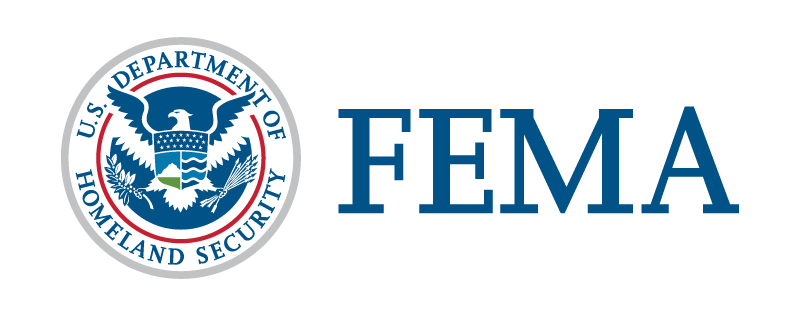President Joseph R. Biden, Jr. Approves Major Disaster Declaration for Tennessee
 ]
]
WASHINGTON – FEMA announced that federal disaster assistance has been made available to the state of Tennessee to supplement state and local recovery efforts in the areas affected by severe storm and flooding on Aug. 21, 2021.
The President’s action makes federal funding available to affected individuals in Humphreys County. Assistance can include grants for temporary housing and home repairs, low-cost loans to cover uninsured property losses and other programs to help individuals and business owners recover from the effects of the disaster.
Federal funding is available to state and eligible local governments and certain private nonprofit organizations on a cost-sharing basis for emergency protective measures, including direct federal assistance, under FEMA’s Public Assistance program in areas affected by severe storm and flooding in Humphreys County.
Federal funding is also available on a cost-sharing basis for hazard mitigation measures statewide.
Myra M. Shird has been named the Federal Coordinating Officer for federal recovery operations in the affected areas. Additional designations may be made if warranted by the results of damage assessments.
Residents and business owners who sustained losses in the designated areas can begin applying for assistance by registering online at www.DisasterAssistance.gov or by calling 1-800-621-3362 or 1-800-462-7585 TTY.
In-Depth: What to know if you’re applying for FEMA aid
 ]
]
NASHVILLE, Tenn. (WTVF) — Humphreys County residents and business owners can now apply for federal disaster assistance.
WHAT YOU NEED TO KNOW:
President Joe Biden approved Tennessee’s disaster declaration
Federal funding is available to Humphreys County residents, business owners
You can apply here or call 1-800-621-FEMA (3362) or 1-800-462-7585 (TTY)
If you need immediate help, check with your local emergency management agency, volunteer agencies or call 211.
The Tennessee Emergency Management Agency (TEMA) says the Major Disaster Declaration will make FEMA’s Individual Assistance (IA) program available to residents and households in Humphreys County. Click here to read more about how to get temporary housing.
According to FEMA’s website, if you have insurance, you should file a claim with your insurance company when you apply for FEMA assistance. While FEMA cannot cover losses already covered by insurance, the agency says you may be eligible for assistance if all of your losses aren’t covered.
TN: Homeowners, renters and businesses in Humphreys County that have uninsured losses from the Aug. 21 severe storm and flooding may apply for disaster assistance. Visit https://t.co/qJkVAZLO0v or call 800-621-3362 (TTY: 800-462-7585). pic.twitter.com/U65iI9pCs4 — FEMA Region 4 (@femaregion4) August 24, 2021
Federal assistance can include grants for temporary housing and home repairs, low-cost loans to cover uninsured property losses, and other programs to help residents and business owners recover.
The U.S. Small Business Administration (SBA) also has a Virtual Disaster Loan Outreach Center for homeowners, renters and business owners. If you have questions about SBA’s disaster loan program, you can call (916) 735-1500, from 9 a.m. – 6 p.m on Mondays – Fridays, or email FOCWAssistance@sba.gov. Read more about SBA loans.
I’ve applied for assistance. Now what?
Once you have applied for assistance, you will get notification letters from FEMA that will explain your next steps. If you indicated that you cannot live in your primary residence during the application process, FEMA says an inspector will contact you by phone to schedule an inspection.
According to FEMA, all inspections will be done without entering your home. When inspectors arrive, they will maintain social distance, visually assess the exterior of the residence, and confirm the interior damage over the phone.
Read more about what to expect after you apply.
Do you have to pay back FEMA help?
According to FEMA, some disaster aid does not have to be paid back, while other types of help may come in the form of loans. A FEMA representative will explain those details to you when you call. You can also review your claim at the online Individual Assistance Center.
FEMA Seeks Public Comments on Proposed Changes to Community Rating System
 ]
]
WASHINGTON – FEMA published a notice in the Federal Register today seeking public comment on the National Flood Insurance Program’s Community Rating System. This notice is to better align flood risk understanding and approaches and to incentivize communities to manage and lower their flood risk.
FEMA posted a Request for Information to gather public comment about ways for the agency to consider modifying, streamlining and creating innovative measures to improve the Community Rating System program. These efforts aim to help FEMA ensure that the program includes necessary, properly tailored and up-to-date requirements that effectively achieve these goals:
Reducing and avoiding flood damage to property
Supporting the insurance aspects of the National Flood Insurance Program
Encouraging a comprehensive approach to floodplain management
The Community Rating System is a voluntary incentive program that recognizes and encourages floodplain management practices that exceed the minimum requirements in the National Flood Insurance Program. The agency is evaluating the Community Rating System’s potential to ongoing support of state, local, tribal and territorial community goals and needs around floodplain management.
FEMA will host three public meetings to explain the proposed changes and how to provide information for public comment. Anyone interested may register online and attend a meeting on:
Sept. 7, 11 a.m.-1 p.m. EDT
Sept. 8, 1-3 p.m. EDT
Sept. 9, 2-4 p.m. EDT
In addition, comments can be submitted from Aug. 23-Sept. 22 on the Federal Rulemaking Portal, Docket ID: FEMA-2021-0021. Please follow the instructions on the page for submitting comments and contact the Regulations.gov Help Desk if you have technical issues.
Visit FEMA.gov for more information.